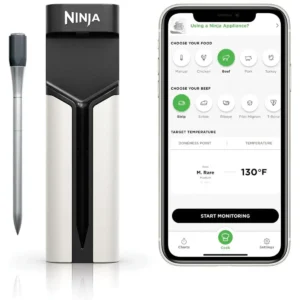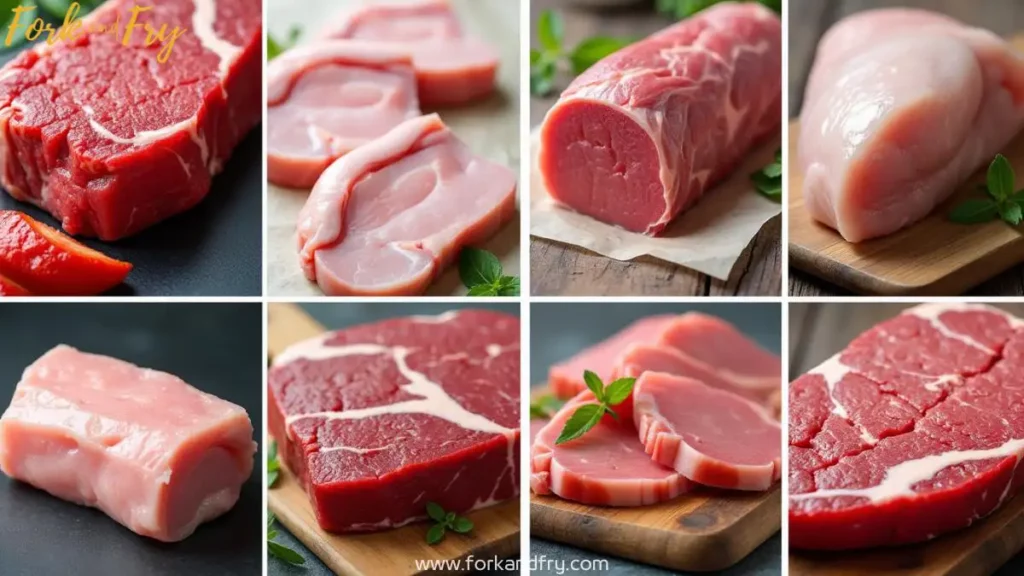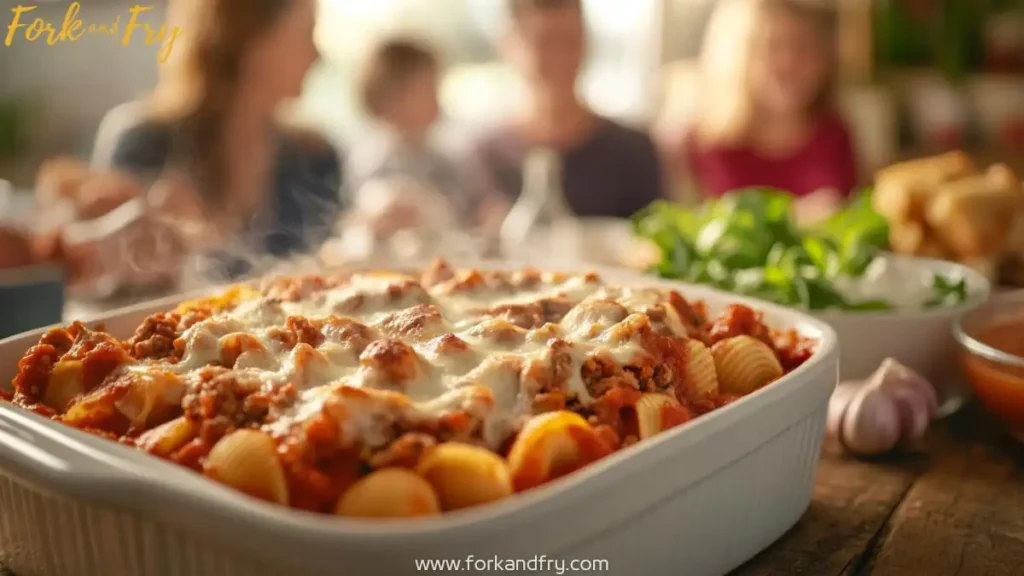Last updated on July 29th, 2025 at 12:16 pm
Table of Contents
Best brine recipes for a juicy deer roast aren’t just about flavor—they’re about transforming lean, wild game into something moist, tender, and deeply satisfying. If you’ve ever struggled with dry or bland venison, brining is the missing step that makes all the difference.
At Fork And Fry, we’ve tested and refined these brining methods to help home cooks create consistently juicy venison roasts—whether you’re smoking a deer shoulder, slow-cooking a deer ham, or roasting in the oven. In this guide, we’ll walk you through the top brine options and link you to detailed recipes that show you exactly how to make them work.
Why Brining Matters for Venison
Venison is a lean, protein-rich meat with a bold flavor and very little fat. That makes it healthy, but also tricky to cook. Without some extra care, cuts like deer roast, smoked deer shoulder, or even deer ham can turn out dry or tough.
Brining solves this by:
- Locking moisture into the muscle fibers
- Infusing flavor throughout the cut
- Breaking down tougher connective tissue
- Helping tame any lingering gamey taste
A good brine is often the difference between an average roast and one your guests will remember.
What Is a Good Brine for Deer Meat?
A solid brine always includes salt and liquid, and often contains sugar, herbs, or aromatics. Different types of brines bring out different flavor profiles, depending on how you plan to cook the deer roast. Below are some of our favorite styles, each with a full recipe you can explore.
1. Basic Salt and Sugar Brine
A traditional foundation for most venison roasts. This mixture of kosher salt, brown sugar, and water helps retain moisture without overpowering the natural flavor of the meat.
Try it here: Deer Roast Recipe for Beginners »
2. Apple Cider Brine
Ideal for smoked cuts like deer shoulder or deer ham. The cider adds sweetness and acid to complement the smoke and balance the boldness of venison.
Full guide: How to Prepare a Perfect Deer Roast – Smoked »
3. Garlic and Herb Brine
Aromatic and savory, this is perfect for oven-roasted venison. Garlic, rosemary, black pepper, and thyme deliver rich, earthy depth to every bite.
4. Buttermilk Soak
While technically not a brine, soaking deer meat in buttermilk is a time-honored way to reduce gamey flavor and tenderize the cut.
We use this technique in: Deer Burger Recipes »
5. Sweet Heat Brine
Combines honey or maple syrup with red pepper flakes and mustard seeds. This brine works especially well for barbecue-style roasts or smoked deer meat recipes.
Great for burgers too: Best Recipes for Deer Burger »
What Do You Soak a Deer Roast in Before Cooking?
According to the University of Minnesota Extension, soaking venison in a salt-based brine or acidic marinade before cooking can reduce strong gamey flavors and improve tenderness—especially in lean cuts like deer roast.
You can soak a deer roast in any of the brines listed above. A good general-purpose soak includes:
- 1/4 cup kosher salt per quart of water
- 1–2 tablespoons of sugar or honey
- Optional: vinegar, citrus juice, or apple cider
- Aromatics like garlic, bay leaf, peppercorns, or fresh herbs
For milder flavor and a more tender result, many hunters and cooks prefer to soak wild game in buttermilk or milk overnight.
Want to smoke a ham-style cut?
Here’s how to do it right: How to Smoke a Deer Ham »
How Long Should You Brine Venison?
Brining time depends on the size and cut of meat:
- Small roasts or steaks (1–2 lbs): 4–6 hours
- Larger roasts (3–5 lbs): 12–24 hours
- Whole hams or shoulders: 24 hours max
Always keep the meat in the refrigerator during brining, and rinse it with cool water before cooking to avoid over-salting.
| Cut of Meat | Weight | Recommended Brining Time | Notes |
| Small Deer Roast | 1–2 lbs | 4–6 hours | Use basic or apple cider brine |
| Medium Deer Roast | 2–4 lbs | 8–12 hours | Rinse and rest before cooking |
| Large Deer Roast | 4–6 lbs | 12–24 hours | Good for oven or slow cooker methods |
| Smoked Deer Shoulder | 3–5 lbs | 18–24 hours | Ideal for sweet + aromatic brines |
| Smoked Deer Ham | 4–7 lbs | 20–24 hours | Try maple or mustard seed sweet-heat brines |
| Deer Steaks or Filets | Under 1 lb | 2–4 hours | Quick soak in buttermilk or light brine |
| Venison Burger (Ground) | N/A | Not recommended | Use seasoning or a milk soak, not brine |
How to Keep a Deer Roast from Drying Out
Even after brining, cooking technique matters. Here are a few tips:
- Cook low and slow to preserve tenderness
- Use a meat thermometer to avoid overcooking (target 130–140°F for medium-rare)
- Let the roast rest for 10–15 minutes before slicing
- For smoking, consider wrapping the meat partway through the cook to retain moisture
Explore More Venison Recipes
Now that you know how brining works, take a look at these full recipes and guides:
- How to Prepare a Perfect Deer Roast – Smoked
- Deer Roast Recipe for Beginners
- Best Recipes for Deer Burger
- 5 Easy Deer Ham Recipes
- Deer Burger Recipes
- How to Smoke a Deer Ham
Conclusion
Cooking a deer roast that’s juicy, tender, and full of flavor starts long before it hits the oven or smoker. With the right brine, you’re building a foundation that elevates the entire meal. At Fork And Fry, we mix time-tested techniques with real-life cooking experience to help you bring out the best in every cut of meat.
Whether you’re new to brining or looking to refine your process, these best brine recipes for a juicy deer roast will help you create meals that bring people together—because good food always does.
FAQ
Can you brine venison too long?
Yes. Over-brining can make the meat too soft or overly salty. Follow the timing suggestions above for best results.
What to soak deer meat in to get rid of the gamey taste?
Buttermilk, milk, apple cider, or vinegar-based soaks work best to neutralize strong flavors. Removing silver skin and connective tissue also helps.
How do I keep my roast moist?
Start with a brine, cook at a low temperature, use a thermometer, and rest the meat after cooking.
How do you cook venison so it’s tender?
Brine it well, avoid high heat, and cook until just medium-rare. Cuts like smoked deer ham or shoulder benefit from slow smoking or braising techniques.
What is a good brine for deer meat?
A good brine for deer meat includes a balance of water, kosher salt, and sugar as a base—typically 1/4 cup salt and 2 tablespoons of sugar per quart of water. From there, you can add aromatics like garlic, rosemary, bay leaf, or black pepper to boost flavor. Apple cider, maple syrup, or vinegar can also enhance the brine, especially for smoked or roasted venison cuts. The goal is to add moisture, tenderness, and flavor to the naturally lean meat.
What do you soak a deer roast in before cooking?
Before cooking, many home cooks soak deer roast in a brine made from salt, water, and flavor-enhancing ingredients like herbs, garlic, or apple cider. This helps reduce any strong gamey flavors while improving tenderness and moisture retention. For especially gamey cuts, some prefer soaking the meat in buttermilk or milk overnight. These acidic soaks help break down proteins and neutralize bold flavors. According to the University of Minnesota Extension, even a simple saltwater soak can noticeably improve wild game like venison.
How long should you brine a deer roast?
Brining time depends on the size of the roast. For smaller cuts (1–2 lbs), brine for 4 to 6 hours. Medium roasts (2–4 lbs) can go 8 to 12 hours, while larger cuts (4–6 lbs or more) benefit from a full 12 to 24 hours. Always brine in the refrigerator, and rinse the meat before cooking to avoid overly salty flavors. Over-brining can make the meat too soft, so it’s important to stick to proper timing based on the size of the cut.
Enjoyed this recipe? Leave a review!
There are no reviews yet. Be the first one to write one.








